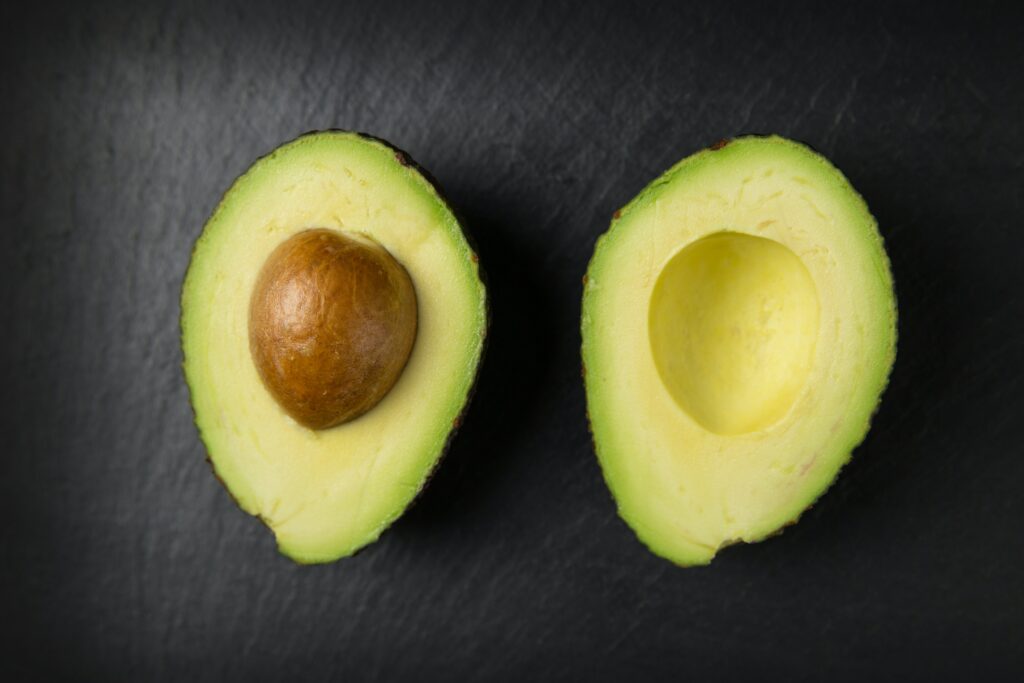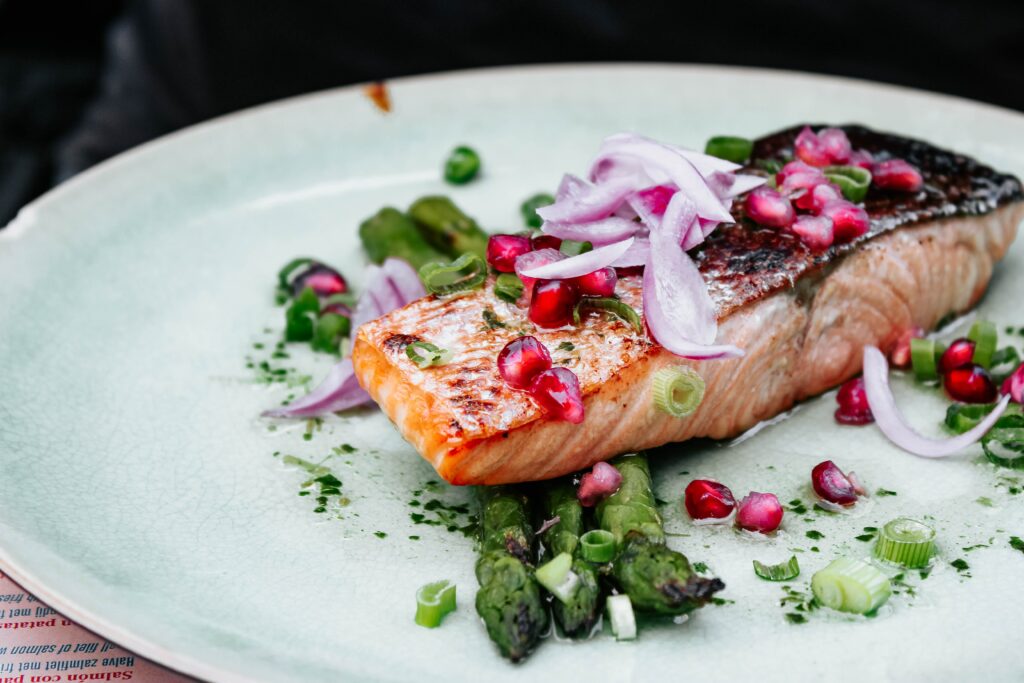The Runner’s Guide to Healthy Fats
Get the skinny on this often vilified, but very valuable macronutrient.
Fat is a tricky macronutrient. If you remember the Special K Diet-laden 1990s (or any food labeled “fat free”), when the the notion that eating fat will make you fat flourished, then you know why it can get complicated.
But since the 90s, we’ve learned that fat is essential for proper cell functioning, organ protection, body temperature, and so much more. And now the pendulum has swung to the other end of the spectrum, as countless keto followers embrace fat so much that it makes up about 70 to 80 percent of their total calorie tally.
Whether you’re on the zero (fat-free) or 80 (keto) end of the scale—or somewhere in between—chances are that you’re still falling for some big fat lies. There are a multitude of misconceptions about fat floating around the internet and social media, and even though this has been true for decades, many people are surprised to learn the Dietary Guidelines for Americans recommend that about 20 to 35 percent of daily calories should come from fats.
“First off, let’s talk about how important fat is! Fat is necessary for the absorption of the vitamins A, D, E and K, and is essential for the production of important hormones, including oestrogen and testosterone,” explains Frances Largeman-Roth, R.D.N., a nutrition expert. “It was drilled into athletes for too long that fat is bad for us and that led many runners and other athletes to adopt fat-free diets in the 1990s and even later, which wasn’t healthy and certainly didn’t boost performance.”
Just as overtraining or under-training can derail your best laid race plans, overeating or under-eating fat can do a number on your body too. Studies prove that runners who skimp on fat are subject to compromised immune systems and slower speeds. At the same time, runners who consume too much fat, and at the wrong times, can have gastrointestinal (GI) system distress and, if those fat-filled foods take the place of carbs and protein, runners can then lack energy to perform and recovery can suffer.
So how do you balance the need for fat without getting too much of it?
We delve into what science and nutrition experts have to say about fat—and how much you should eat per day. Plus, score a sample menu so you can see how to put this into practice on your own plate.

The Different Types of Fat
The reason fat gets a bad reputation is because there are harmful fats—namely, saturated and trans fat. But there are also helpful fats, including polyunsaturated and monounsaturated fat. The difference in these types of fat boils down to chemistry.
All fats consist of a chain of carbon atoms bonded to hydrogen atoms. In saturated fat, the carbon atom is fully “saturated” with hydrogen. Unsaturated fat, on the other hand, does not contain as many hydrogen molecules on the carbon chain.
“Unsaturated fats provide a benefit beyond flavour, including protecting heart and brain health and fighting chronic inflammation,” Largeman-Roth says.
When we talk about “healthy fats,” those are typically the mono- and polyunsaturated fats which are liquid at room temperature, adds Lauren Harris-Pincus, M.S., R.D.N.
Unsaturated fat comes from fatty fish and plant foods, like nuts, seeds, avocados, and most oils (excluding coconut). Ashley Reaver, M.S., R.D., a registered dietitian and breaks down these two types of healthy fats:
- Monounsaturated fats: These are relatively neutral in flavour, and the majority of fats that we should consume. These are not associated with any negative health conditions. In fact, when monounsaturated fats replace saturated fats in the diet, they are beneficial. They may help to increase HDL (a.k.a. “good”) cholesterol levels. Get your fix from avocados, olives, olive oil, and nuts.
- Polyunsaturated fats: Mostly found in plant sources and fatty fish such as salmon, mackerel, and halibut, these are the types of fats you want to intentionally add to the diet as they are beneficial for heart heart and inflammation. Omega-3 fats fall under this umbrella, and other strong food sources include walnuts, flax seeds, and pumpkin seeds.
While certain unsaturated fats are getting some shade lately—namely, vegetable and seed oils—“there is no scientific basis for these claims in humans,” Reaver says. “Canola oil, soybean oil, and other seed oils are typically neutral when it comes to human health since they are primarily monounsaturated fats. Research shows that they may actually be beneficial for heart health when used in place of animal fats—important to caveat!”
Saturated fat is solid at room temp, but can become liquid once heated. These are found primarily in animal foods, such as red meat, poultry, whole milk, cheese, butter, and even coconut oil.
While the jury is still out on whether or not saturated fat alone causes heart disease, a meta-analysis by the American Heart Association states that replacing saturated fat with unsaturated fat (poly or mono) can reduce the risk of developing cardiovascular disease.
“You don’t need to eliminate saturated fat entirely, however the foods high in those types of fats should be enjoyed in smaller portions with the emphasis on fruit, veggies, beans, whole grains, and the healthy fats found in seafood, nuts, and seeds,” Harris-Pincus says.
Trans fats are created when hydrogen is added to liquid oil to transform it into a solid fat. Food manufacturers previously used this inexpensive type of fat in processed foods, but it’s since been outlawed in the United States due to health risks.
How Much Fat You Should Eat Every Day
Ideally 20 to 30 percent of your total daily calories should come from fat, according to Angie Asche, M.S., R.D., C.S.S.D. (This goes up to 35 percent, according to the USDA Dietary Guidelines for American.) She adds that you can approximate your fat needs as 1 gram per kilogram of body weight.
Jenna Braddock, R.D., C.S.S.D., agrees: “This is a big range and allows runners to play with the amount of fat in their diet to achieve their energy needs,” she says.
For the average 2,000 calorie diet, that’s 400 to 600 calories from fat (44 grams to 66 grams). In a normal day, that’s like eating the following:
- ½ avocado (11 grams fat)
- 1 to 2 tablespoons olive oil (14 to 28 grams fat)
- 1 tablespoon peanut butter (8 grams fat)
- 1 cup low-fat plain Greek yogurt (5 grams fat)
- 113 gram chicken breast (6 grams fat)
- 1 tablespoon chia seeds (4 grams fat)
A Sample Healthy Fat Menu for Runners
Tallying up how much fat you’re eating throughout the day can seem overwhelming. So rather than logging every single piece of food you eat, try to incorporate a healthy fat at every meal.
“Because we need fat to absorb fat-soluble vitamins, it’s smart to have a little fat with each meal and snack for optimal absorption,” says Largeman-Roth, an avid runner herself.
Keep in mind that the serving sizes for fat are smaller than carbs and protein. To give even more context and show you how she incorporates fat into her menu, consider Largeman-Roth’s meal plan:
- Breakfast: ½ cup dried oatmeal cooked with 1 cup water + 2 tablespoons natural peanut butter + ½ cup blueberries (380 calories, 15 grams of fat)
- Snack: 28 grams walnuts + 1 medium orange (270 calories, 18 grams of fat)
- Lunch: 1 cup cooked quinoa + 1 cup roasted veggies + sauce of choice + ½ an avocado (600 calories, 12 grams of fat)
- Snack: Banana + 2 energy bites (280 calories, 18 grams of fat)
- Dinner: 85 grams roasted salmon + 1 cup cooked pasta + 1 cup asparagus + 2 tablespoons grated Parmesan (490 cals, 15 grams of fat)
Approximate daily total calories: 2,020
Approximate daily total fat: 70 grams (30% calories from fat—majority is from mono and polyunsaturated fat sources)
“Food immediately before, during, and after workouts should be relatively low in fat to allow your body to easily digest and access energy available from carbohydrates to fuel and recover from the workout,” Reaver says. So you can adjust your food choices accordingly, based on your day’s training schedule.
When Should Runners Eat and Avoid Fat
Experts encourage eating healthy fats throughout the day to reap its many health benefits, such as reducing inflammation and muscle soreness, keeping blood pressure in check, and increasing oxygen uptake. But Asche recommends eating fat at least an hour before a training run.
Fat has more calories per gram than carbohydrates and protein (9 calories per gram, compared to 4 calories per gram), meaning that it takes longer to digest. And any fat that is left in the stomach during a run can cause GI disturbances.
In addition, Braddock suggests limiting fat considerably in the 24 hours leading up to a race, and proposes experimenting with when you eat different sources of fat in relation to your training runs.
“This will vary depending on the athlete, the duration of the event—a marathon versus an ultra—and the overall type of diet they consume,” adds Asche.
With the rise of low-carb, high-fat diets, like keto, some runners have been experimenting with them in an attempt to train their bodies to use fat as fuel. The research on fat adaptation for exercise is still relatively new and limited, and the general consensus on how it affects performance is mixed. One study on elite race walkers suggests that although you can train the body to use fat as fuel, it may negatively affect overall performance.
Other research in runners suggests it may be beneficial. For example, a study on male endurance athletes found that twelve weeks of keto adaptation enhanced their body composition, fat oxidation, and certain measures of endurance performance. Another study of 20 elite ultramarathoners and Ironman-distance triathletes determined that those who were keto-adapted used a much higher rate of fat as fuel, with no differences in glycogen depletion, as compared to the high-carb group.
Again, these studies were done on a very small, narrow range of participants, and personal results may vary. In other words, more research is needed. That said, with a diet like keto, 80 percent of your calories from fat and almost zero come from carbs—which is the fuel source your body and brain like to tap into first, because it’s fast acting and most easily accessible. In other words, loading up on fat probably won’t do your long runs, speedwork, and HIIT workouts any favours.
The Bottom Line on Healthy Fats
The dieticians we spoke to confirm that it’s important to prioritise unsaturated fat and minimise saturated fat to 10 percent or less of total daily calories. According to Braddock, “the essential [omega-3] fatty acids, EPA and DHA, are particularly important to focus on because of their well-known benefits on health and physiology,” such as boosting your heart and brain health, and preventing certain cancers.
That said, it’s entirely possible to overdo it on fat. “Eating too much of any macronutrient could lead to an excess amount of calories or unwanted weight gain,” says Asche. She adds that increasing fat above the recommended range could result in offsetting carbohydrates and/or protein, which could negatively impact both performance and exercise recovery.
READ MORE ON: healthy eating Healthy fats nutrition


